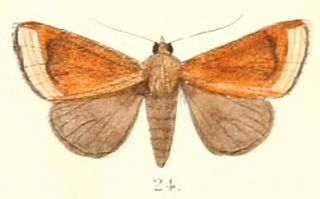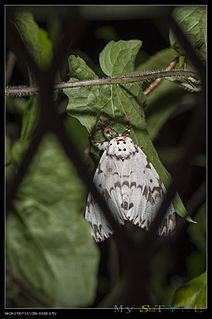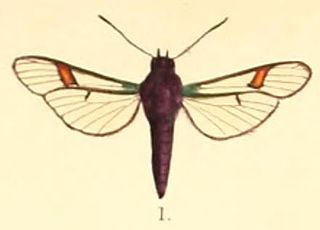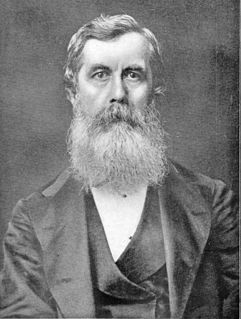Frederic Anthony Rzewski is an American composer and virtuoso pianist. His major compositions, which often incorporate social and political themes, include the minimalist Coming Together and the piano variations The People United Will Never Be Defeated!

A-flat major is a major scale based on A♭, with the pitches A♭, B♭, C, D♭, E♭, F, and G. Its key signature has four flats.
William Stephen Atkinson was a British lepidopterist who worked for much of his life in India.

William Chapman Hewitson was a British naturalist. A wealthy collector, Hewitson was particularly devoted to Coleoptera (beetles) and Lepidoptera and, also, to birds' nests and eggs. His collection of butterflies, collected by him as well as purchased from travellers throughout the world, was one of the largest and most important of his time. He contributed to and published many works on entomology and ornithology and was an accomplished scientific illustrator.

Gerosis bhagava, the common yellow-breast flat, is a butterfly belonging to the family Hesperiidae. The species was first described by Frederic Moore in 1865.

Sarangesa purendra, the spotted small flat, is a butterfly belonging to the family Hesperiidae.
Moore Dry Dock Company was a ship repair and shipbuilding company in Oakland, California.

Nikara is a genus of moths of the family Noctuidae described by Frederic Moore in 1882.

Mahoba is a genus of moths in the subfamily Lymantriinae. The genus was erected by Frederic Moore in 1879.

Colias erate, the eastern pale clouded yellow, is a butterfly in the family Pieridae. It is found from south-eastern Europe, through Turkey over central Asia up to Japan and Taiwan. To the south, its range stretches to Somalia and Ethiopia. The species was first described by Eugenius Johann Christoph Esper in 1805.

Lymantria mathura, the rosy gypsy moth, is a species of moth of the family Erebidae found in the Russian Far East, Nepal, Japan, the Korean Peninsula, northern India and China. The species was first described by Frederic Moore in 1866.
The Royal Glasgow Institute of the Fine Arts (RGI) is an independent organisation in Glasgow, founded in 1861, which promotes contemporary art and artists in Scotland. The Institute organizes the largest and most prestigious annual art exhibition in Scotland - open to all artists.

Pramila is a monotypic genus moth genus in the family Sesiidae. Its only species, Pramila atkinsoni, occurs in the Bengal region of what was British India. Both the genus and species were first described by Frederic Moore in 1879.

Frederic Moore FZS was a British entomologist. He was also an illustrator and produced six volumes of Lepidoptera Indica and a catalogue of the birds in the collection of the East India Company.

The Brentwood Library Site (40WM210), also known as the Jarman Farm Site, is a Mississippian culture archaeological site located in the city of Brentwood, in Williamson County, Tennessee. It was occupied during Regional Period IV of the local Mississippian chronology, and artifacts from the site have been radiocarbon dated to between 1298 to 1465 CE.

Lepidoptera Indica was a 10 volume work on the butterflies of the Indian region that was begun in 1890 and completed in 1913. It was published by Lovell Reeve and Co. of London. It has been considered the magnum opus of its author, Frederic Moore, assistant curator at the museum of the East India Company. Frederic Moore described a number of new species through this publication. Moore was a splitter, known for careless creation of synonyms, sometimes placing the same species in more than one genus.

Aedia perdicipennis is a moth of the family Noctuidae first described by Frederic Moore in 1882. It is found in the north-eastern Himalayas of India, Nepal, Thailand, Myanmar, Taiwan, Singapore, Borneo, Sumatra and Sulawesi.

Iambia transversa is a moth of the family Noctuidae first described by Frederic Moore in 1882.

Avitta fasciosa is a moth of the family Erebidae first described by Frederic Moore in 1882.















